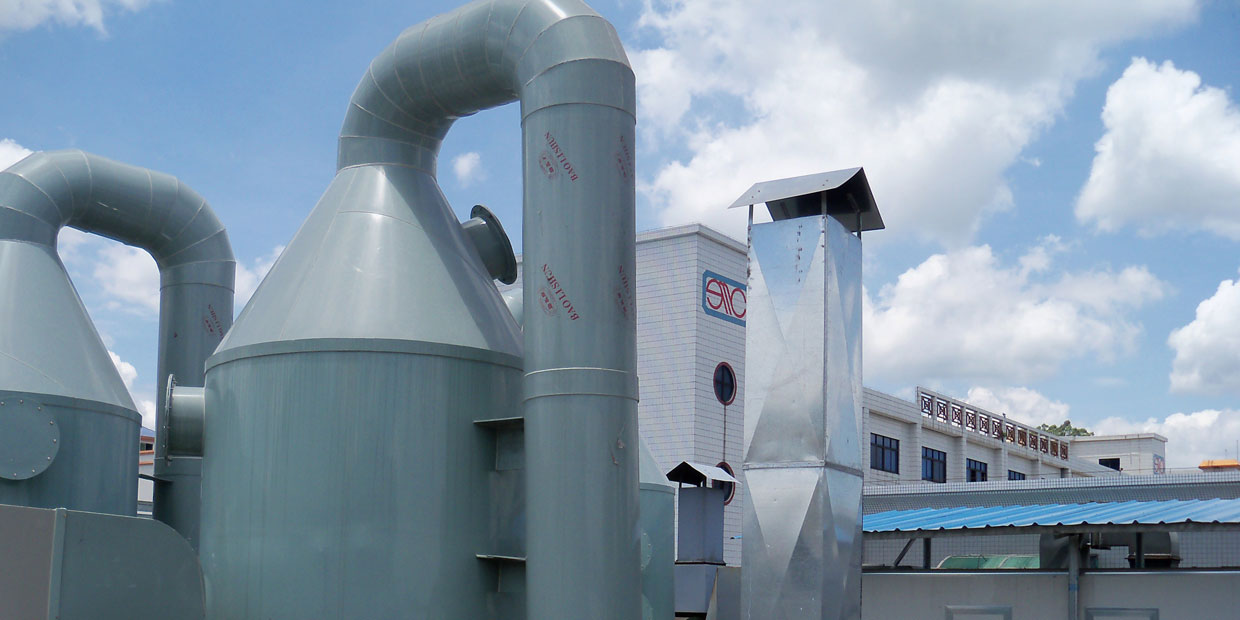废气处理 - 1
废气处理 - 2
废气处理 - 3
废气处理 - 4
Waste gas treatment, also known as waste gas purification. Exhaust gas treatment refers to the industrial factory emissions pretreatment before discharge, in order to achieve the national emission standards for external environment. Our waste gas treatment equipment mainly used in spray painting industry for waste paint fog, air disinfection and purification aspects.
Paint exhaust gas treatment solutions are available for chemical absorption and physical absorption, but "triphenyl" exhaust gas chemical activity is low, generally do not use chemical absorption. Physical absorption is for small volatile liquid absorbent, it has higher affinity to paint fog. It's suitable for high flow but low temperature and low concentration gas.
Water Spray: Water spray solution is widely used in the treatment of air pollution, especially in the spraying process such as water curtain paint booth. The principle is by spraying the water over paint fog to catch pollutants for clean emission. The advantages is water resources are easy to obtain, and after filtration, water can be reused to minimize the waste of water resources, water spray in the treatment of large particles has very high efficiency, often used as a pretreatment of exhaust gas.
Condensation recovery: the exhaust gas directly condensed or adsorbed condensed condensate, condensate separated by the recovery of valuable organic matter. The method for high concentrations, low temperature, air flow of small exhaust gas treatment. However, this method of investment, high energy consumption, operating costs.
Flame treatment: the use of gas or fuel and other auxiliary fuel burning with emitted gas (700-800 ℃). The process is simple, less investment, low energy consumption and high grade purification.
Catalytic combustion method: the exhausted gas will be heated to 200 ~ 300 ℃ through the catalytic bed. The method is of low energy consumption, high purification rate, no secondary pollution, the process is simple and easy to operate. Suitable for high temperature and high concentration of organic waste gas treatment.
Adsorption treatment:
- (1) direct adsorption: organic gas directly through the activated carbon, up to 95% of the purification rate, simple equipment, small investment, easy to operate, but need regular replacement of activated carbon for low concentrations of pollutants without recycling occasions.
- (2) adsorption recovery method: the organic gas adsorption by activated carbon, saturated with activated carbon after desorption regeneration with hot air. This is often replaced with activated carbon, the cost is too high. Not recommended.
According to the paint characteristics and treatment effects, there are low-temperature plasma and UV light waste gas treatment process, described as follows:
Low temperature plasma - low temperature plasma degradation of pollutants is the use of these high-energy electrons, ions, atoms and free radicals and other active particles and pollutants in the role of pollutants, pollutant molecules in a very short period of time decomposition, and the follow-up of the Reaction in order to achieve the purpose of decomposition of pollutants.
Low-temperature plasma exhaust gas treatment equipment and technology as a new treatment technology of gaseous pollutants is a set of physics, chemistry, biology and environmental science in one integrated cross-chemical electronic technology, because it is easy to make pollutants Molecular decomposition and treatment of low energy consumption characteristics of air pollution control at home and abroad is full of prospects and effective one of the technical methods, the use and promotion of broad prospects for the industrial field of VOC-like organic waste gas and malodorous gas management development A new idea.
UV Photolysis - The product utilizes a special high energy and high ozone UV ultraviolet light beam to irradiate the industrial waste gas, which can decompose the odor / industrial waste gases such as ammonia, trimethylamine, hydrogen sulfide, methyl sulfide, methyl mercaptan, methyl sulfide, Benzene, toluene, xylene and other molecular chain structure, so that organic or inorganic macromolecule compounds molecular chain, in the high-energy ultraviolet light beam irradiation, the degradation into low molecular weight compounds, such as low molecular weight compounds, such as CO2, H2O and so on.








